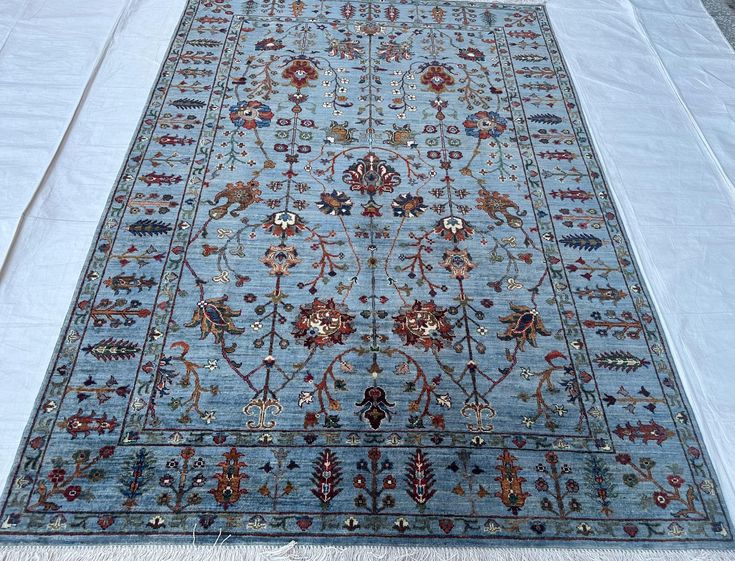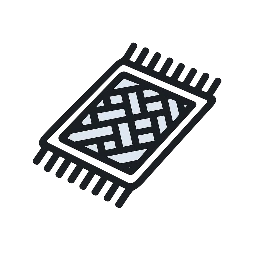Your cart is currently empty!
The Timeless Art of Afghan Rugs: Weaving Heritage, Culture, and Beauty

For centuries, the art of rug weaving has been one of Afghanistan’s most treasured cultural traditions a timeless symbol of craftsmanship, identity, and resilience. Afghan rugs, known worldwide for their intricate designs, rich colors, and exceptional quality, are more than decorative pieces; they are woven stories that carry the soul of a nation and the legacy of its people.
This article explores the history, cultural significance, weaving traditions, and modern evolution of Afghan rugs, tracing how this ancient art continues to thrive in both Afghan homes and global markets.
1. Origins of Afghan Rug Weaving
Rug weaving in Afghanistan dates back over 2,500 years, long before modern borders existed. The art was first developed by nomadic and tribal communities, especially among the Turkmen, Baluchi, and Uzbek groups who inhabited northern and western Afghanistan.
Early Afghan rugs were woven for practical purposes — to cover tents, insulate the floors, and provide comfort during harsh winters. Over time, these functional items evolved into expressions of art and identity, incorporating regional symbols, colors, and motifs that represented the weaver’s tribe and story.
Archaeological findings from Central Asia and the Silk Road show that Afghan weaving techniques share deep roots with the ancient Persian and Turkic carpet traditions, yet Afghan rugs have always maintained a distinctive style — bold, geometric, and deeply personal.
2. The Cultural and Social Role of Rugs in Afghanistan
In Afghan culture, rugs are not simply floor coverings they represent family heritage, social identity, and artistic expression.
Every rug tells a story. The designs, motifs, and colors woven into each piece often carry meanings tied to love, protection, fertility, nature, or faith. Many Afghan women learn the art of weaving from their mothers and grandmothers at a young age, spending months or even years creating a single masterpiece.
In traditional Afghan society, rugs also serve as:
- Dowries and wedding gifts, symbolizing prosperity and unity.
- Tokens of hospitality, as guests are often welcomed and seated on the finest rugs in the home.
- Spiritual expressions, with some motifs designed to ward off evil or bring blessings.
The process of weaving itself is deeply communal a combination of patience, skill, and devotion. Each knot represents countless hours of handwork and concentration, reflecting not just craftsmanship, but emotion and identity.
3. Regional Rug Styles of Afghanistan
Afghanistan’s diverse ethnic and tribal makeup has led to an extraordinary range of rug styles, each with unique colors, motifs, and weaving methods. Below are some of the most famous types:
a. Chobi (Choubi or Ziegler) Rugs
Derived from the Farsi word “chob” (meaning wood), Chobi rugs use natural vegetable dyes made from tree bark, flowers, and roots. Known for their soft, muted tones and elegant floral patterns, these rugs are popular in Western homes for their ability to blend with modern décor.
The Chobi style was revitalized in the late 20th century in Afghan villages and refugee camps in Pakistan, where skilled Afghan weavers began producing high-quality rugs for export.
b. Khal Mohammadi Rugs
These are among the most recognized Afghan rugs, famous for their deep red tones and geometric patterns. Originally woven by Turkmen tribes, Khal Mohammadi rugs are celebrated for their symmetry and strong character — a perfect combination of simplicity and sophistication.
c. Baluchi Rugs
Woven by the Baluch tribes of southwestern Afghanistan, Baluchi rugs feature darker colors such as brown, black, and dark blue, often with abstract or prayer motifs. They are smaller in size, traditionally used as prayer mats or wall hangings.
d. Maimana Kilims
Unlike knotted rugs, kilims are flat-woven textiles with no pile. The Maimana kilims, from northern Afghanistan, are known for their diamond and chevron patterns and bold contrasts. They are lightweight, reversible, and perfect for both traditional and contemporary settings.
e. Herati and Bidjar Patterns
Originating in the northwestern regions, these designs combine Persian influence with Afghan boldness. The Herati pattern — featuring a rosette surrounded by leaves and fish motifs — is one of the most popular traditional designs in Afghan weaving.
4. Materials and Techniques
Authentic Afghan rugs are entirely handwoven using natural materials. The most common fibers include:
- Wool: The backbone of Afghan rugs. Afghan wool is known for its resilience, softness, and natural sheen.
- Cotton: Often used as the foundation or warp threads for strength.
- Silk: Occasionally incorporated for highlights or luxurious detail.
The dyes used in Afghan rugs are mostly natural and plant-based, sourced from indigo, pomegranate skins, walnut husks, madder root, and other organic materials. These dyes age beautifully, creating subtle color variations that give each rug a unique depth and warmth.
Weaving techniques vary across regions but typically involve asymmetric (Persian) knots or symmetric (Turkish) knots, depending on tribal tradition. A medium-sized rug may take 4 to 6 months to complete — some larger pieces can take a full year or more.
5. Symbolism in Afghan Rug Designs
Every shape, color, and pattern in Afghan rugs carries cultural meaning.
Some common symbols include:
- Gul (flower) motifs: Represent growth, life, and beauty.
- Ram’s horns or hooks: Symbolize strength and protection.
- Diamond and octagon shapes: Represent balance and eternity.
- Tree of life: A common spiritual symbol of connection between heaven and earth.
The dominant colors — red, blue, and brown — are not chosen randomly.
- Red stands for passion, courage, and good fortune.
- Blue symbolizes peace and spirituality.
- Brown and beige evoke nature, humility, and endurance.
This symbolic language allows each rug to act like a silent storyteller, carrying personal and tribal history across generations.
6. Women Weavers: The Heart of Afghan Rug Culture
Afghan rug weaving is deeply tied to women’s lives and empowerment.
In rural villages and refugee communities, women are the main artisans behind Afghanistan’s world-renowned carpets. Many work from home, balancing domestic duties while producing intricate designs that support their families.
Organizations such as Turquoise Mountain, AfghanMade, and local cooperatives have provided training and fair trade opportunities, ensuring that female weavers are recognized and compensated fairly for their artistry.
Through rug weaving, Afghan women have preserved cultural heritage, gained financial independence, and maintained resilience through decades of conflict and displacement.
7. Afghan Rugs in the Global Market
Afghan rugs have long been prized by collectors, interior designers, and art lovers around the world. Their reputation for authenticity and craftsmanship has earned Afghanistan a place among the world’s most respected rug-producing nations.
During the late 20th century, despite wars and political instability, Afghan weavers continued to produce and export rugs through Pakistan and Iran. Today, with improved international trade and digital marketplaces, Afghan rugs are being sold directly to customers in Europe, North America, and Australia, reconnecting artisans to the global market.
Afghan rugs are not mass-produced — each piece is unique. This individuality appeals to modern buyers seeking authenticity and sustainable craftsmanship.
8. Sustainability and Ethical Production
In recent years, Afghan rug production has aligned with sustainable and ethical practices.
Natural dyes and hand-spun wool reduce environmental impact, while fair trade initiatives ensure better wages and working conditions for artisans.
Unlike machine-made rugs that rely on synthetic fibers, Afghan rugs are fully biodegradable and often last for generations — a true investment in both quality and sustainability.
Many cooperatives now certify rugs as “Fair Trade” or “Handmade in Afghanistan”, giving buyers assurance that their purchase supports communities and preserves traditional art.
9. Challenges and the Path Forward
Despite its rich history, the Afghan rug industry faces challenges:
- Economic instability and security issues limit export potential.
- Younger generations often leave weaving due to limited income.
- The influx of machine-made imitations threatens the authenticity of handmade crafts.
However, there is renewed hope. NGOs, local businesses, and international partners are investing in Afghan artisans — training new weavers, opening global e-commerce opportunities, and promoting Afghan rugs as luxury cultural products.
Platforms like Afghan Europa Bazar help connect traditional craftsmanship with modern customers, ensuring that Afghan weaving continues to thrive and inspire.
10. The Legacy of Afghan Rugs
Afghan rugs represent the soul of a nation woven into art. Each carpet is not only a work of beauty but a living piece of history — the result of centuries of culture, patience, and creativity.
Whether displayed in a modern apartment in Vienna or a traditional home in Kabul, Afghan rugs carry the warmth, strength, and spirit of their makers. They remind us that even in hardship, art endures — and that threads of culture can connect the past to the present, and Afghanistan to the world.
Conclusion
From the ancient caravans of the Silk Road to today’s global homes, Afghan rugs remain a bridge between tradition and modernity. They are more than textiles — they are a testament to human artistry, resilience, and identity.
When you buy an Afghan rug, you don’t just purchase décor; you preserve a culture, empower artisans, and carry a story that’s been told through threads for over two millennia
2 responses to “Afghan Rugs: Timeless Art, Cultural Heritage, and Enduring Beauty”
-
Can you share your Email Adress?
-
See About Page
-

Leave a Reply